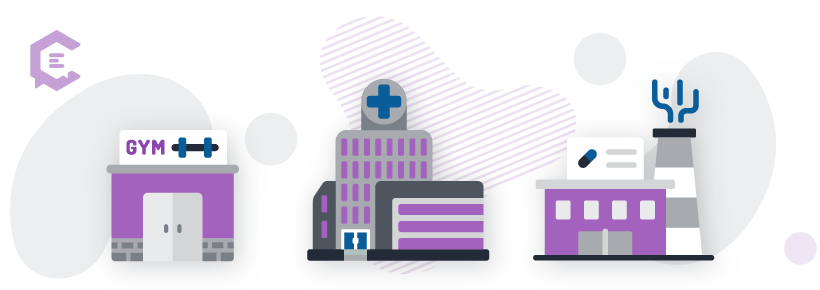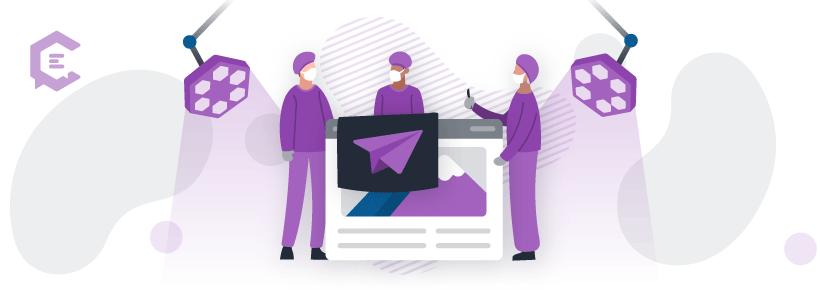The health and wellness industry is booming. Worth close to $5 trillion globally, the health industry remains one of the fastest-growing categories.
Add in the health insurance sector, and you’ll see another $5 billion in revenue by 2026. COVID-19 will only serve to expand opportunities in this space, as will new healthcare technologies.
Crunchbase reports close to 9,000 health care start-ups, as new players look for new solutions to new (and old) diseases and preventative care.
We’ve come a very long way from the family doctor and annual check-ups.
Accompanying this transformation are new opportunities for content in the health industry. Consumers are looking for information. Medical professionals are sharing data and trends. Businesses are looking for strategic alliance partners and funding. Quality content serves all those needs.
What kinds of health-related companies need content?
The short answer is “all of them.” A few examples are:
- Pharmaceutical companies and brands: Today’s consumer expects to get insights into drug uses and new trials.
- Over-the-counter health-related products: Brands and manufacturers want to generate sales and interest for a wide range of health-related solutions, available in-store, and online.
- Private practice physicians and health-related businesses: Medical and dental care have become highly competitive, and consumers have a choice. Those practitioners who convey expertise and build trust are more likely to attract new patients and retain existing ones.
- Medical centers: Hospital marketing has become highly competitive.
- Walk-in clinics: Proximity is critical here, but consumers will make choices based on the quality of care and patient reviews.
- Health insurance companies and brokers: Building a reliable brand reputation results in more policyholders.
- Healthcare technology developers and manufacturers: Marketing direct-to-consumer and business-to-business, these companies need to educate and sell.
- Assisted living facilities: Trust and care quality is especially important.
- Gyms, physical therapy centers, and medical spas: Consumers have more choices than ever before. Content can help brands differentiate themselves.
- Mental health service providers: Awareness of issues in this category has risen, and more consumers are seeking solutions for themselves and their loved ones.
Reliable content helps establish you and your brands as experts in your field. People are more savvy and involved in their physical and mental health than ever before. Consumer and patient education adds tremendous value to what you do and can build both credibility and loyalty.
Consumers are searching for everything from keto to hiccups.
Many consumers start by using a search engine like Google to find what they’re seeking. Google gets more than a billion health questions each day. Knowing what terms they’re using is one of the first steps to developing the right types of content.
A recent research study revealed the most common health-related terms. Heart disease, diet, and pain are among the top five. Blood pressure, keto, and hiccups also topped the 2019 list of most-Googled health searches.
As you craft your content strategy, think about how your solutions can fit with what your ideal patient or buyer is seeking. Search behavior can change from week-to-week and year-to-year, so working with professionals who understand how to analyze search and use it as the basis for content creation is essential.
What types of content does the health industry use?
Your website is still the “window into your brand’s soul.” It needs to be current, comprehensive, and easy-to-navigate.
Other forms of health content may include:
- Blogs about timely topics
- Case studies of successes
- Infographics that illustrate trends and relevant statistics
- Webinars
- Videos
- Downloadable reports that enable you to capture viewer information
- e-newsletters
- Targeted text messaging
- Press announcements of new products and developments
- Both digital and conventional advertising
- Out-of-home advertising like billboards
- Social media posting
Creating an integrated media plan and calendar is essential. Still, you must also be flexible in responding to new developments (especially during the pandemic era) and feedback from online data and your team about the types of questions people have.
Successful content producers and marketers have a clear sense of how prospects like to consume content. For example, some people may prefer to hear from you via text message, whereas others want to read longer-form content on your website. As with all marketing, knowing who you’re trying to reach and when to reach out to them is critical to success. Respecting privacy is also essential in the health care arena.
Making your content highly visible to your target market is both an art and a science. Factors like word count are critical in generating views and engagement. The length of your content needs to be appropriate for your industry, your audience, and the stage of the consideration and buying cycle.
Health-related information can be confusing, so as you develop your content, be sure to avoid jargon and complicated explanations. Humanizing the experience can be an incredibly powerful technique for health care companies and marketers. This excellent example from Mayo Clinic used real patient stories to illustrate their quality of care.
For more insights into best practices in health care content creation, access this comprehensive guide.
Timing is critical to effective health industry content marketing.
Without appearing opportunistic, smart content marketers have developed effective ways of providing information during the COVID-19 pandemic.
Yale University launched a course about managing stress and mental health during this difficult time. Some companies like Walgreens and CVS set-up “microsites” within their websites to provide the latest information about their COVID-19 testing options. These medical professionals have used social media and video to share perspectives.
During a crisis, effective content from credible sources can keep people informed and safe. It also builds the brand reputation of the people or entities providing that information.
You may also notice that when a celebrity contracts a disease or annual events like Breast Cancer Awareness Month occurs, many health-related content marketers will address consumer concerns by providing facts about the topic. When consumers seek reliable information, health companies can immediately respond by providing credible answers to frequently asked questions.
The teamlancing “operating room” comes to the rescue.
Just as health care practices engage a team of experts who evaluate patients, perform surgeries, prescribe cures, and follow-up on treatments and results, professional marketing content developers have unique skills and abilities. The term teamlancing refers to the critical talents and organization structure that deliver the best possible marketing and sales outcomes.
At the very least, you’ll need:
- Research tools that give you a clear sense of your target market and opportunities.
- A content strategist who analyzes your data and target audience and recommends the best approaches.
- Marketing operations professionals who can help you build out and manage your funnel. Simply put, that’s the system that feeds leads into your pipeline. Using well-timed and targeted messaging, you can ultimately convert them to patients or buyers.
- Professional writers and producers who have a broad and deep understanding of the health care industry and your specific practice or product area.
As you know, many health-related businesses are heavily regulated, so you will also want to engage in-house and freelance talent that is comfortable with adhering to guidelines while still being creative and compelling.
These trends will have an impact on the future of health industry content.
Technology and shifts in consumer behavior have a significant impact on communications as we advance. Although COVID-19 has affected them, these trends are here to stay.
- Telemedicine and virtual experiences have become commonplace as a result of COVID-19. More consumers and patients are comfortable “seeing a doctor” online or taking remote exercise classes. Delivering content that people can access anytime, anywhere, will be critical.
- As in many other industries, consumers respond well to graphics. Visual storytelling and even virtual reality will become powerful ways of disseminating health-related information.
- Voice search is on the upswing. Currently, 19 million people say they want to use voice assistants to help them find health information. Smart devices will also play a role in monitoring health and feeding data to healthcare providers. This trend will create new channels for content delivery.
- Consumers will continue to rely on reviews and credibility of sources when they are making healthcare decisions. An estimated 94 percent of consumers today factor ratings into their healthcare decisions. Just as diners and shoppers look to star ratings and consumer feedback, so do patients.
- Social media is still a powerful source of information and referrals. Make sure that it remains a crucial part of your marketing mix and use it effectively to build your brand reputation, generate word-of-mouth referrals, and participate in conversations regarding health issues. One research study shows that 91 percent of consumers rely on online communities when making healthcare decisions.
The cure for content confusion starts here.
Whether your goal is attracting new patients and clients, or reducing operating expenses by making information available online, having the right types of content in your mix is critical.
- Understand who your prospective patients/customers are and what their questions are.
- Develop compelling and unique content that gives you high rankings in those one billion daily searches.
- Entrust your content development to seasoned teamlancers who have extensive health care experience. The right combination entails strong in-house strategists and category-savvy writers and producers.
- Measure, analyze, and refine your content performance (views, engagement, and appointments/sales) to fine-tune your strategy.
- Most importantly, stay on top of trends in your field so that you can be first-to-market (and most trusted) when consumers are seeking new health information.
Whether people are searching for health information on their phones, tablets, or desktops, forward-thinking industry professionals have the right prescription for meeting their needs — today and in the future.







